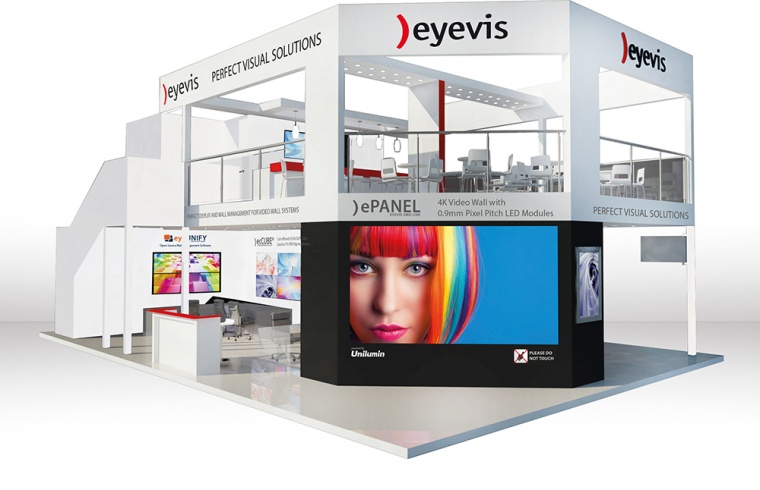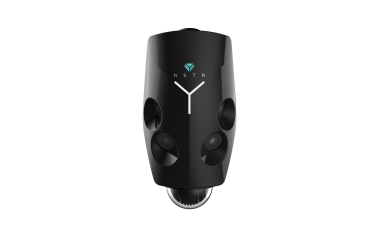Eyevis Introduced the DLP Cube with TRP Chip Architecture at ISE 2017
Eyevis is an early user of the Tilt and Roll Pixel chip architecture by Texas Instruments in its recently introduced TRP rear projection cubes. The new technique allows a more comp...

Eyevis is an early user of the ‘Tilt and Roll Pixel’ chip architecture by Texas Instruments in its recently introduced TRP rear projection cubes. The new technique allows a more compact design of the projection engine, which has made a simplified housing design possible. The DLP Cube, innovative LED video wall solutions, new LCD developments as well as graphic controllers and their latest wall management software, were presented by the display specialists from Reutlingen at the Integrates Systems Europe (ISE) show in Amsterdam.
The more effective optical design of the TRP cube results in a considerable power consumption saving, which in turn means a lower cost of purchase and operation compared to conventional DLP cubes. The units are built for reliable 24/7 operation and up to 80,000 hours operation using LED technology. In addition to the 50” full HD models presented at ISE, a 60” version will soon be available. A 2x2 installation of the 50” Slim version has a shallow installation depth of only 432 mm.
A 4K LED video wall with a narrow pixel pitch of only 0.9 mm welcomed visitors to the stand. Directly behind it, the future trends in this field were presented with the help of several single LED exhibits. They included an innovative front service mechanism, that allows easy front access for service personnel and proprietary eyevis processing for the company’s ePANEL LED modules ‘powered by Unilumin’. Besides easy installation and calibration of a video wall, the processing enables uncompressed video signals to be passed on in real time at up to 4K resolution via an Ethernet connection and to loop them through the connected modules.
Thin Bezels
The trend is to use LCD displays with ever thinner bezels for video wall installations. Eyevis meets the demand with their new 46” and 55” monitors from the ESN series. These devices meet the requirements of modern video wall installations with a mechanical bezel of less than 2 mm, full HD resolution as well as an ‘eyevis-typical’ robust housing. The 46” version is the first device that is also available in a ‘Pro’ version, with a loop-through of 4K signals at up to 60Hz. To control and monitor the functionality of all eyevis displays, a small separate unit is available that can be simply attached to the rear panel of one display in a video wall.
As an example of the custom-built constructions that eyevis often develops to comply with individual requirements, a so-called Mirror Display will be shown at the stand. In a unique way it connects the characteristics of a mirror with a digital display, and can find attention-grabbing application in retail or hotel environments. From the sector of high resolution 4K/UHD LCD displays, an 85” device with a luminance of 700cd/m², a 65” monitor and a 50” version with a 32 point multi-user touch surface flew the Eyevis flag.
Split Controllers and Wall Management
The Eyevis’ IT department has been busy working on efficient high performance video wall controllers and their simple and comprehensive operation. The products of their efforts are the new NetPix series split controllers and updated versions of the EyeCon and EyeUnifywall management solutions. In addition to modified housings and new type designations in the NetPix series, which are now classified as Motion, Core and Rage versions, a lot has changed on the inside. The latest generation of CPUs and graphic board hardware for input and output signals equips the controllers for applications that have to handle multiple sources and displays or require high performance graphic processing. Both wall management software solutions, version 6 of the EyeCon Enterprise solution as well as the open-source version EyeUnify, come with a handful of new features for comprehensive control and administration of video wall systems. EyeUnify for example, includes direct integration of YouTube videos and channels, providing an ideal solution for today’s emerging Social Media Command Centers.













